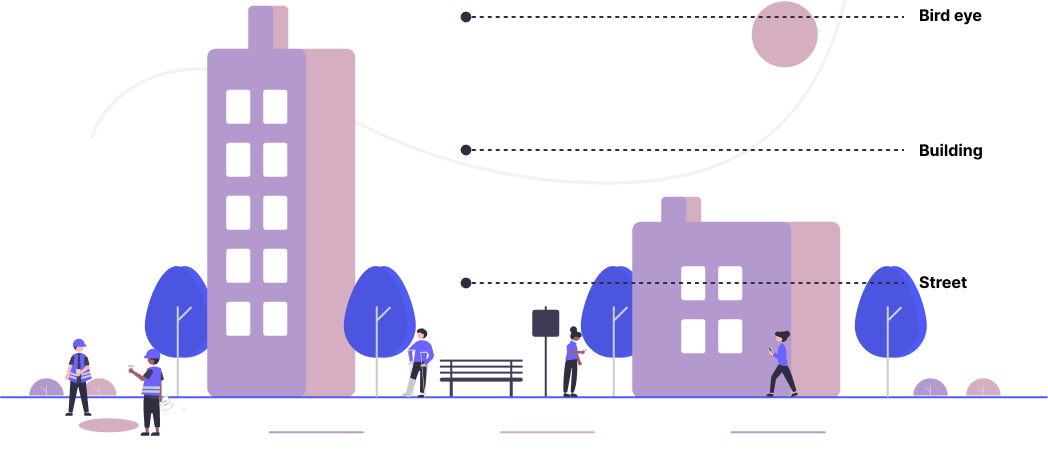Empowering your team to think strategically is crucial to building more impactful and efficient solutions. However, strategy can often be a daunting concept to tackle.
It's helpful to break strategy down into different levels of abstraction to make it more approachable. By doing so, you can ask targeted questions that will enable your team to make better choices and level up their approach to product development.
Think of strategy like looking at a city from different altitude levels:
- 🦅 Bird eye view: the destination (including vision)
- 🏢 Building view: a collection of opportunity spaces to reach the destination
- 🚦 Street view: solution to ship to end users within an opportunity space
It's essential to ask different strategy questions according to the altitude level.
Questions for 🦅bird eye view, AKA vision/destination
- How will the world be different once done?
- How does it connect to the company’s vision or big picture?
- Why is it essential for the company and its target audience?
- What’s the delta between where we are today and where we want to be?
Questions for 🏢building view, AKA opportunity space
- Where do we play and won’t play? Regarding the target audience, territories, technology, and problems to solve.
- How will we win? What’s unique and hard to copy about our solutions? What principles must be valid on all our products?
- How will we know we have won?
- What people, resources, and processes do we need to place to maintain this strategy alive?
- What’s our approach to launching new products?
Questions for 🚦street view, AKA product canvas
- What’s the target audience and their needs, problems, and motivations?
- What people's problem(s) need to be solved?
- What business problem needs to be solved?
- What are the behavior changes or success metrics we’d like to see?
- What are the potential solutions?
- What are the most important things to learn and the minimum amount of work to know them?
- What are the dependencies, blockers, and risks?
Answering these questions will help you paint a vivid picture of an inspiring destination and clear choices of what your team will do and won't do to get to this destination.
It's important to note that the order in which you answer these questions doesn't have to be sequential. You can start with the solution and work back up to the vision as long as you ensure all the strategy pieces fit together seamlessly.
How to map out a team to this structure?
Typically, the team's leadership takes ownership of the bird's eye view to facilitate a bottom-up approach for individual contributors. After the destination has been established, pods take charge of the building and street views, which involve identifying the problems to solve and determining which solutions should be implemented.
When leading in this area, you should identify the best people to address these questions rather than answering them yourself. Therefore, collaboration is crucial, and I recommend organizing a workshop with cross-functional partners to get the best answers possible. The workshop could be as small as one hour or take up a couple of days.
This approach ensures that everyone is on the same page regarding the strategy and that the most effective answers are obtained.
How to start to implement it?
To encourage your team to become more strategic, focus on the lowest level of strategy, the street view, and gradually move up to the high-level strategy.
It might sound counterintuitive, but initiating discussions centered on concrete solutions is more straightforward than a high-level strategy that can seem more abstract.
You need a strategy for your strategy.
Improving a team's strategic approach requires time and effort, but the investment will ultimately pay off in efficiency and impact. However, this requires dedicated effort and a tailored approach considering the team's maturity level.
A mature team may only need a simple workshop, but a less experienced team might need a roadshow to promote the value of using this strategic approach. Unfortunately, some team members may believe that answering these questions will slow the process. Instead, the key is to show them how much time they can save in the product delivery stage by building the right thing the first time instead of redoing non-impactful work.
With a clear multi-level strategy and a collaborative approach, you can save time and avoid wasted efforts, increasing your team's efficiency and impact.



